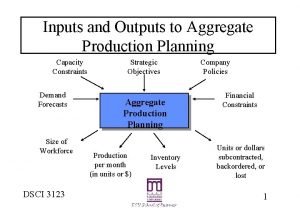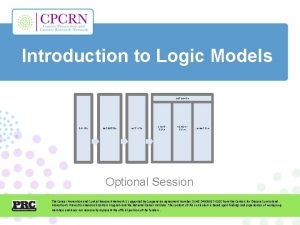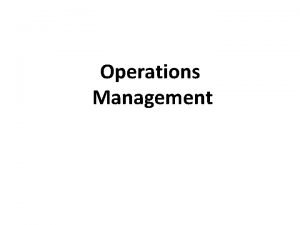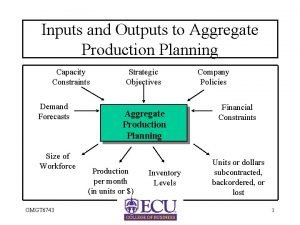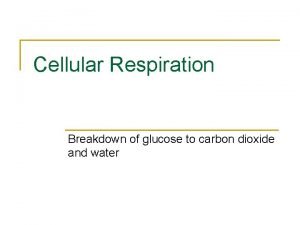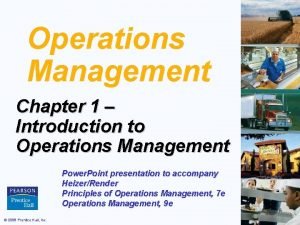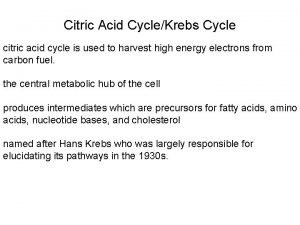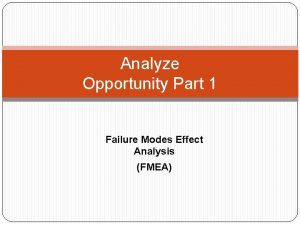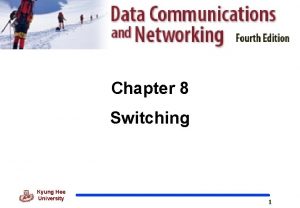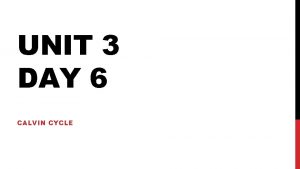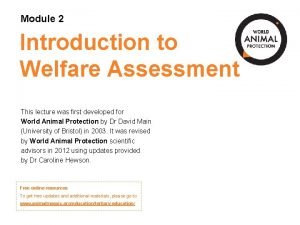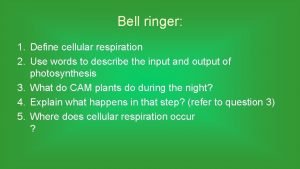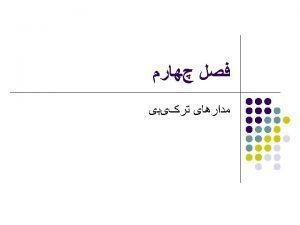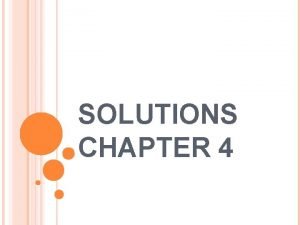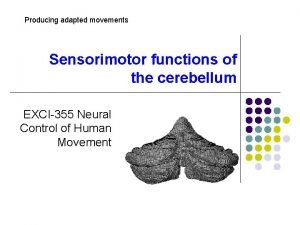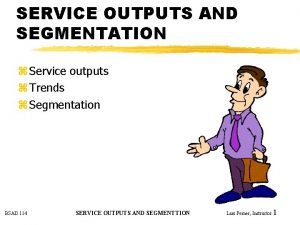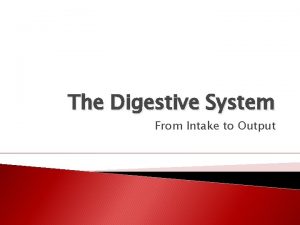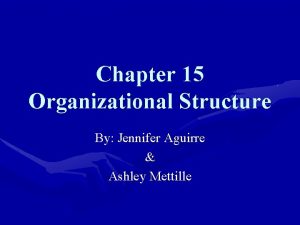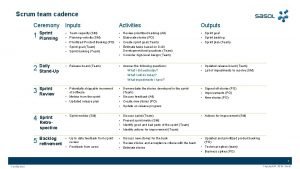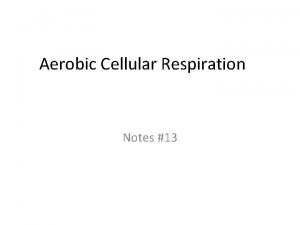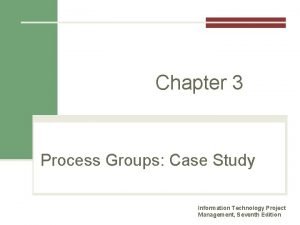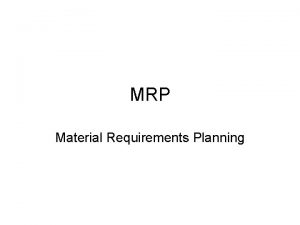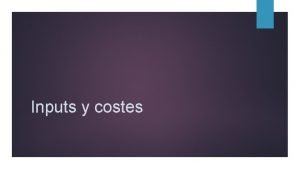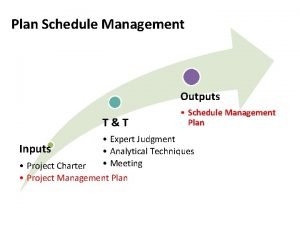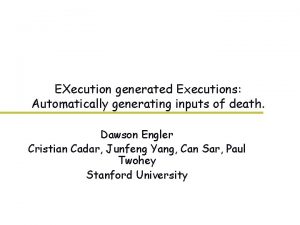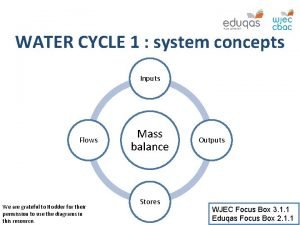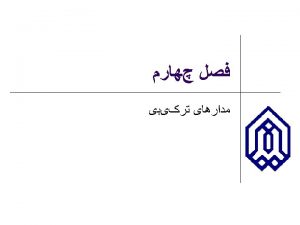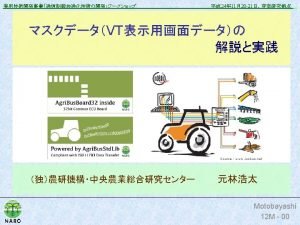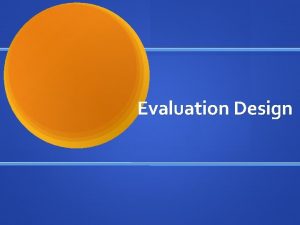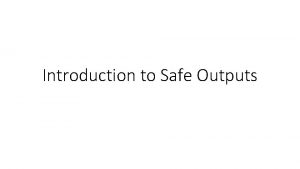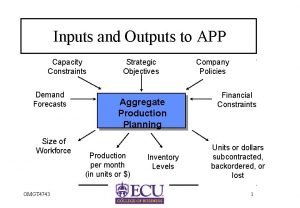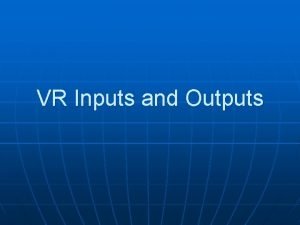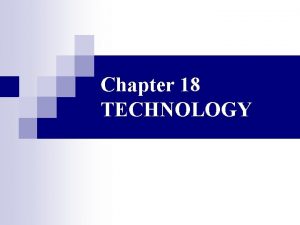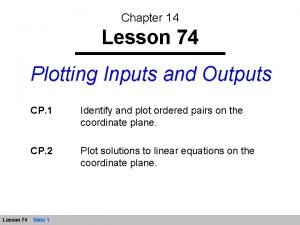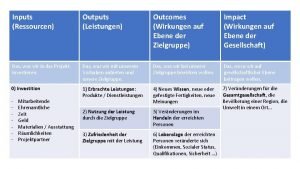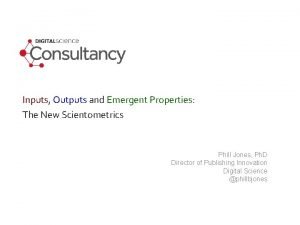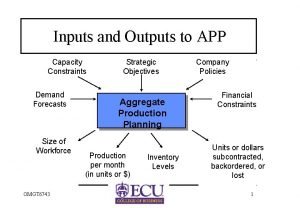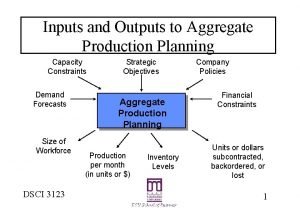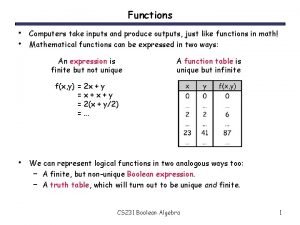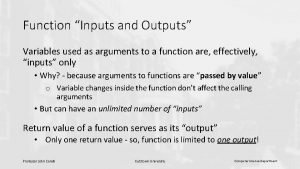Inputs to internal pool Outputs from internal pool
































![Plasma [H+] (or plasma [CO 2]) H+ secretion HCO 3– conservation H+ excretion HCO Plasma [H+] (or plasma [CO 2]) H+ secretion HCO 3– conservation H+ excretion HCO](https://slidetodoc.com/presentation_image_h2/00b72db78afee1719b4a0442f7f95d85/image-33.jpg)

- Slides: 34

Inputs to internal pool Outputs from internal pool (Inside body) Input from external environment (through ingestion, inhalation, absorption through body surface, or artificial injection) Metabolically produced by body Storage depots within body (no function other than storage) Internal pool (extracellular fluid concentration) of a substance Excretion to external environment (through kidneys, lungs, gills, digestive tract, or body surface, e. g. , sweat, tears, sloughed skin) Metabolically consumed in body (irretrievably altered) Reversible incorporation into more complex molecular structures (fulfills a specific function) Fig. 13 -1, p. 573

Fig. 13 -2, p. 574

Table 13 -1, p. 575

Difference between ECF and ICF • Cellular proteins • Cellular organic osmolytes • Unequal distribution of Na+ and K+

Fig. 13 -3, p. 576

Osmotic and volume balance Osmotic problems threaten cells and animals 1. Evaporation of body water into air (eg. sweating or breathing) 2. Osmosis into or out of environment (eg. fresh water or saline water) 3. Freezing (locks up water in ice crystals and concentrates ions in unfrozen water) 4. Excretion (require water for waste removal) 5. Diseases (eg. Diabetes)

Fig. 13 -4 a, p. 577

Fig. 13 -4 c, p. 577

Fig. 13 -5, p. 578

Fig. 13 -6, p. 579

Fig. 13 -7, p. 579

Table 13 -2 a, p. 580

Table 13 -2 b, p. 580

Table 13 -2 c, p. 581

Fig. 13 -8, p. 582

Fig. 13 -10, p. 585

Medium <5 m. Osm Absorbs water through gills and skin Body fluids ca. 300 m. Osm Obtains salts through “chloride” cells in gills and with food Salts lost via feces Removes much water and some salt via dilute urine Fig. 13 -11, p. 586

Adaptation of Freshwater Animals • • Active transport of ions Hypotonic urine Lower internal osmolarities Low permeability of integument

Terrestrial animals Dietary H 2 O Na. CI H 2 O retention Na. CI retention H 2 O lost via respiration H 2 O Na. CI lost via excretion Fig. 13 -12, p. 587

ECF Hypertonicity 1. Insufficient water intake (eg. Drought, desert) 2. Excessive water loss (heavy sweating, panting, vomiting, diarrhea, diabetes, breath in dry air, exposed to salt water) 3. Drinking hypertonic saline water 4. Alcohol inhibits vasopressin secretion

ECF Hypotonicity 1. Intake of relatively more water than solutes 2. Retention of excess water without solute

Table 13 -3, p. 590

ECF volume Relieves Osmolarity + Hypothalamic osmoreceptors (dominant factor controlling thirst and vasopressin secretion) + Arterial blood pressure + Left atrial volume receptors (important only in large changes in plasma volume/arterial pressure) Hypothalamic neurons Thirst Relieves + Vasopressin Arteriolar vasoconstriction H 2 O intake H 2 O permeability of distal and collecting tubules H 2 O reabsorption Urine output Plasma osmolarity Plasma volume Fig. 13 -13, p. 591

Table 13 -4, p. 592

Na+ load in body Arterial blood pressure a b GFR Aldosterone Na+ filtered Na+ reabsorbed Excretion of Na+ and accompanying Cl 2 and fluid Conservation of Na. Cl and accompanying fluid Fig. 13 -14, p. 593

Fig. 13 -15, p. 594

Fig. 13 -16, p. 596

Fig. 13 -17, p. 596

Three p. H defenders and Four p. H buffer systems • 1. 2. 3. Three defense against p. H changes Chemical buffer systems Respiratory control Excretory control

Fig. 13 -19, p. 599

Three p. H defenders and Four p. H buffer systems • 1. 2. 3. 4. Four buffer systems Carbon dioxide-bicarbonate buffer Peptide and protein buffer Hemoglobin buffer Phosphate buffer

p. 600
![Plasma H or plasma CO 2 H secretion HCO 3 conservation H excretion HCO Plasma [H+] (or plasma [CO 2]) H+ secretion HCO 3– conservation H+ excretion HCO](https://slidetodoc.com/presentation_image_h2/00b72db78afee1719b4a0442f7f95d85/image-33.jpg)
Plasma [H+] (or plasma [CO 2]) H+ secretion HCO 3– conservation H+ excretion HCO 3– excretion Plasma [H+] Plasma [HCO 3–] Fig. 13 -20, p. 603

Fig. 13 -23, p. 606
 Aggregate planning inputs
Aggregate planning inputs Inputs, activities, outputs, outcomes
Inputs, activities, outputs, outcomes What are the inputs to and outputs of a supply chain
What are the inputs to and outputs of a supply chain Input-transformation-output model restaurant
Input-transformation-output model restaurant Level strategy production planning
Level strategy production planning Coenzymes in cellular respiration
Coenzymes in cellular respiration What are the 5 major senses in human computer interaction
What are the 5 major senses in human computer interaction Starbucks inputs and outputs
Starbucks inputs and outputs Output of citric acid cycle
Output of citric acid cycle Inputs and outputs
Inputs and outputs Fmea inputs and outputs
Fmea inputs and outputs In a banyan switch for 8 inputs and 8 outputs we have
In a banyan switch for 8 inputs and 8 outputs we have Inputs and outputs of calvin cycle
Inputs and outputs of calvin cycle Module 2 the animal world
Module 2 the animal world Input of krebs cycle
Input of krebs cycle Inputs and outputs
Inputs and outputs Drainage basin inputs and outputs
Drainage basin inputs and outputs Basic principles of input design
Basic principles of input design What are the outputs of the sign-extend and the jump
What are the outputs of the sign-extend and the jump Cerebellum
Cerebellum What are some of the key outputs of each process group?
What are some of the key outputs of each process group? Market segmenttion
Market segmenttion Output of digestive system
Output of digestive system Measuring domestic output and national income
Measuring domestic output and national income Standardization of outputs
Standardization of outputs Sprint planning outputs
Sprint planning outputs Standardization of outputs
Standardization of outputs What does aerobic cellular respiration mean
What does aerobic cellular respiration mean Stratxsimulations login
Stratxsimulations login What are some of the key outputs of each process group?
What are some of the key outputs of each process group? Output of mrp system
Output of mrp system Inputs de una empresa
Inputs de una empresa Plan schedule management inputs
Plan schedule management inputs Exe: automatically generating inputs of death
Exe: automatically generating inputs of death Water cycle
Water cycle
